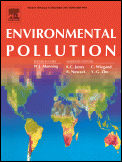Environmental Pollution 167
Overview of new articles on POPs in a new issue of the Environmental Pollution journal.

Pages 34-40
Fang Jia, Xinyi Cui, Wei Wang, Laura Delgado-Moreno, Jay Gan
- A disposable SPME method was developed for measuring Cfree of PBDEs in sediment.
- Cfree decreased with increasing congener bromination or sediment OC content.
- Cfree of PBDEs accounted for <0.012% of the total chemical mass in sediment.
- High KDOC values suggest a high probability for DOM-facilitated offsite transport.
Pages 78-84
Kai Zhang, Bo Liang, Ji-Zhong Wang, Yu-Feng Guan, Eddy Y. Zeng
- Upstream PAH levels were lower than downstream PAHs and pose low ecological risk.
- Riverine PAHs are predominantly pyrogenic.
- Parent PAHs in Pearl River are mainly derived from within the PRD.
- The 15 priority PAHs were mainly generated within the Pearl River Delta.
Pages 155-162
Liang-Ying Liu, Ji-Zhong Wang, Gao-Ling Wei, Yu-Feng Guan, Eddy Y. Zeng
- Coal and biomass combustion was the main origin of PAHs in coastal marine sediment of China.
- Fluvial transport was the main mode for transporting PAHs to the East China Sea inner shelf.
- Atmospheric deposition largely accounted for sediment PAHs in Yellow Sea and the South China Sea.
- Regional energy use pattern in China was responsible for the spatial distribution of PAHs in coastal marine sediment.
22.5.2012




